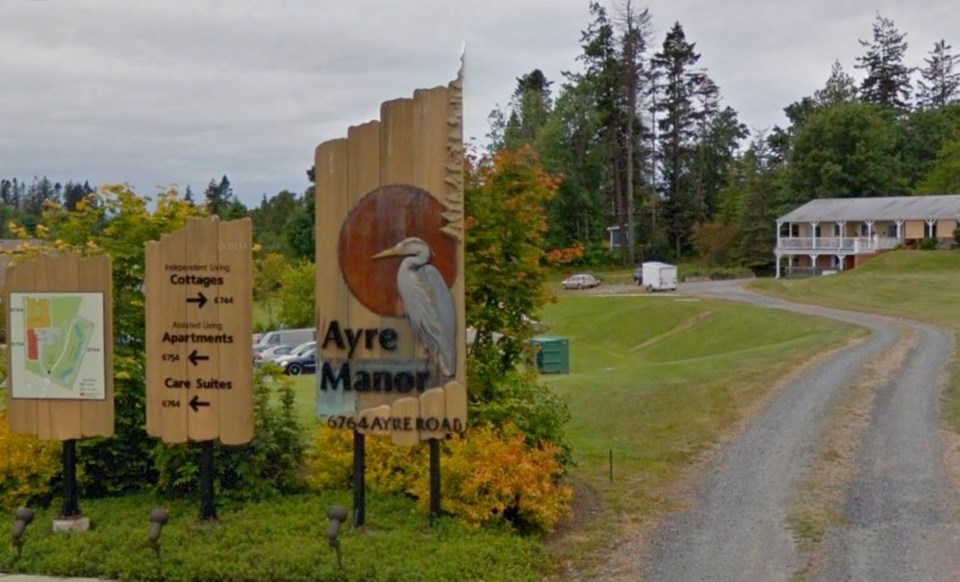It took Bob Banner two weeks before he could bring himself to sign the papers sending his wife of 58 years into a care home.
There was no choice, though. Jeanne Banner’s dementia had progressed to the point where he could no longer give her what she needed. Still …
“It’s really difficult, you know,” the 80-year-old Sooke man says.
What’s frustrating him now, nine months after surrendering Jeanne to the health system, is a so-far unsuccessful struggle to get her into a facility where he figures she’ll be better off. He has rattled the doors at Island Health, gone through MLA John Horgan’s office, been promised that moving Jeanne is a priority — but the woman he loves remains in the same spot she has been in since last spring.
It’s more proof of the growing challenge as the silver tsunami slowly but inexorably floods the health-care system. Residential care is like a game of musical chairs, with more people in need of care than there are places to put them. Getting people into the best beds is easier said than done — and with the mass of baby boomers yet to add to the pressure, it’s going to get harder.
Jeanne moved into the Priory, a complex-care facility in Langford, in April. Bob would have preferred to see her go to Sooke’s Ayre Manor, but the Priory was the best of five choices offered by Island Health. Bob feared that she would be snakes-and-laddered to the bottom of the priority list if he rejected all five.
As soon as he could — there was an eight-week waiting period — Bob applied to have Jeanne transferred to Ayre Manor. “I think the care is better,” he says. Bob drives to Langford every day to see his wife. But with Ayre Manor being just 1.5 kilometres from his house, a transfer would make it a lot easier to keep an eye on her or to respond quickly when necessary; it alarms him that she has had a couple of serious falls. Besides, Sooke is where the Banners’ support system is, where they started the family business, Bob’s Repair, in 1974.
Bob has been assured by Island Health that moving Jeanne is a priority, but more than once it has been someone else who has filled a vacant bed.
The health authority says deciding who goes where is a complex process that comes down to balancing pressures. Urgency of need is a factor — whether someone has help at home, say, or is bedridden in an acute-care room in hospital. (The average wait time to get into residential care is 15 days if you’re being transferred from hospital, 40 if coming from the community.) It’s also hard to find a place in a small facility like Ayre Manor, which has just 32 complex-care suites.
Island Health has 2,787 residential-care beds in Greater Victoria. Those numbers aren’t expected to change much, even with a couple of new facilities added.
This month, Island Health unveiled plans to build a 320-bed care home on what used to be the playing field of Blanshard Elementary on Hillside Avenue. Called the Summit at Quadra Village, it will cater to seniors with dementia and complex care needs. But when the $70-million facility opens in 2018, it won’t add to the supply of care beds, just replace those lost when two aging facilities — Oak Bay Lodge, which has 247 subsidized units, and the 73-bed Mount Tolmie Hospital — are phased out.
Likewise, the 260-bed Heights at Mount View opened on Carey Road in Saanich recently, but it was built as a replacement for the 147-bed Central Care Home and 83-bed Mount Edwards Court.
The province, which spends about $1.8 billion a year on residential care for seniors, would rather not have to build or operate more facilities. Periodically, it rolls out a program with a name like Home First or Closer to Home, the goal being to keep seniors in their own houses as long as possible — an idea that is as laudable as it is money-saving.
What that means, though, is that when they do finally leave home, the kind of care they need is intensive and therefore expensive.
It’s all scary when you look at the numbers, but truly hard when it’s your wife.



